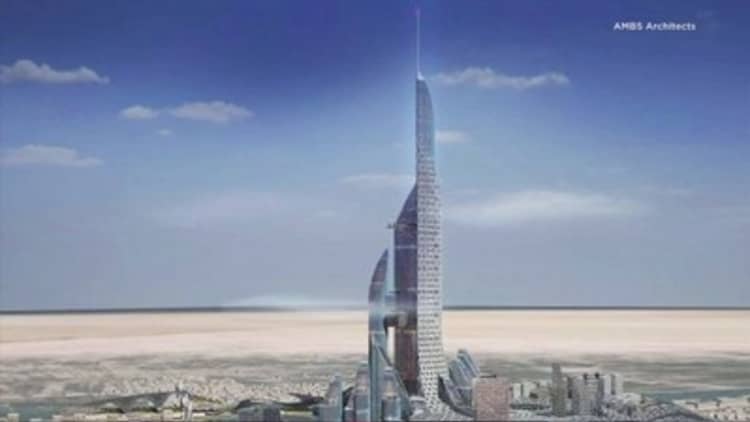
Designs and plans have been drawn up for the world's tallest building. Its location? Basra, in the south of Iraq.
Designed by architecture practice AMBS and described as a "beacon for Iraq's future," at its highest point the proposed Bride will stand at 1,152 meters. The construction will be made of four conjoined towers, the tallest of which, Tower 1, will stand 964 meters high, with a 188 meter high antenna.
While this will make it the world's tallest building, its architects say that their priority when designing was altogether different. "That was never the ambition," Marcos De Andres, director at AMBS Architects, told CNBC in a phone interview.
"It was to build the most advanced, sustainable… vertical city," he added. "It's the most logical way of doing it… a conjoined system of towers that are connected horizontally. It's the most stable structure."
With stability comes safety, according to AMBS, with the towers offering "several alternative access and escape routes via horizontal and vertical circulation."
A city nestled on the shores of the Shatt al-Arab river, Basra is a crucial cog in Iraq's oil industry and home to the country's main port.
If the project is seen through and realized on the ground, it would offer a good news story for the country, which has been blighted by conflict and unrest for the last 13 years.
The Iraqi government is currently battling to regain control of territory lost to Daesh – otherwise known as ISIL – whose forces have overrun large swathes of the country, including the major northern city of Mosul. The U.K. government currently advises against all but essential travel to Basra.
De Andres described Basra as a "very safe city" and said he was "absolutely" confident that the project would be realized.
Making the project sustainable is another goal. "One of the key objectives at the beginning was to create a city that could live off the grid, so if it could sustain itself it would be amazing, it would produce all the energy that it requires," De Andres said.
It is hoped that the project will be "net zero", producing as much energy as it consumes.
"The calculations show that it can be done but if we don't get it, we'll be very close" De Andres said.
De Andres also said that the intention is for the building to be 100 percent powered by solar. The use of shade is another important facet of the design: the tallest tower – Tower One – will provide shelter from the hot sun for the three below it.
A canopy will in turn provide shade and cover for the south façade of Tower One, with integrated photovoltaic thermal panels (PVTs) – which generate both electricity and heat – another feature.




